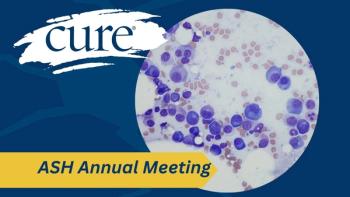
CLL Versus Other Leukemia Types
Transcript:
Nicole Lamanna, MD: Let’s talk a little about the background of chronic lymphocytic leukemia and what it means to have CLL as opposed to other blood cancers or even just to have a blood cancer. First, CLL is a chronic leukemia. I always specify the word “chronic” to my patients. I say, “That’s good news and bad news.” Chronic, in one sense, is good because you’re going to live with this, potentially, for a very long time, hopefully for the rest of your life, until we find a cure. But the bad news, on the flip side, is that we call it chronic leukemia because we haven’t found a cure yet. People can live with this disease a lot longer than other cancers, such as acute leukemia.
When we talk about CLL as opposed to other leukemias, this is a disorder of the lymphocytes. This is one part of the white blood cell count that you make in your bone marrow. You make other elements of your white blood cell counts. There are different types of leukemias that can affect different cell lines. This happens to affect the lymphoid cell. I always try to tell people that if you think about your hips or your long bones, or if you cook and you make pea soup or chicken soup and you use the bone, that soft part is the marrow.
So, you make all of your good blood elements: your white count, your red cells, the platelets. But you also make these leukemia cells. Over time, if these leukemia cells crowd out the normal cells of your bone marrow, when the doctor pokes you for blood, he or she may notice that your lymphocyte count is elevated. That’s the leukemia cells. But your other blood counts can be low.
When we talk about whether somebody needs treatment, there are things that we consider. Is this chronic leukemia? Are these lymphoid cells impacting your good blood counts? And so, that’s very different from somebody with acute leukemia. Usually, they present with these very large abnormal cells. And usually they’re very sick. So, it’s a very different disease. But when anybody hears the word “leukemia,” of course it’s very disconcerting. It’s disconcerting to have a blood cancer. It’s leukemia. “Does that mean I’m an acute leukemic? Am I going to die from this disorder? Am I going to live with this disorder?” So, CLL is a chronic leukemia. Most people can live for a very long period of time with this condition.
Some people never need treatment for this. About a quarter of patients never need treatment for CLL. But at some point, the rest of the folks—about three-quarters of patients–will require some therapy sometime during their lifetime. People ask, “How common is this leukemia?” About 15,000 new patients are diagnosed in the United States every year. Because it’s a chronic disease, and people live with this for years, there’s several hundreds of thousands of folks living with this in the United States at any given time. There are many people with CLL. When you compare chronic leukemia to other cancers–like breast cancer, lung cancer, and colon cancer–leukemias are rare. If you put all of the leukemias together, they really only represent the minority of cancers. It’s about a 4% to 5% incidence of cancer. So, you are a rare individual. But certainly, you’re going to live with this, as compared to some other cancers where the diagnosis can be very extreme. So, it’s very different.
Transcript Edited for Clarity





